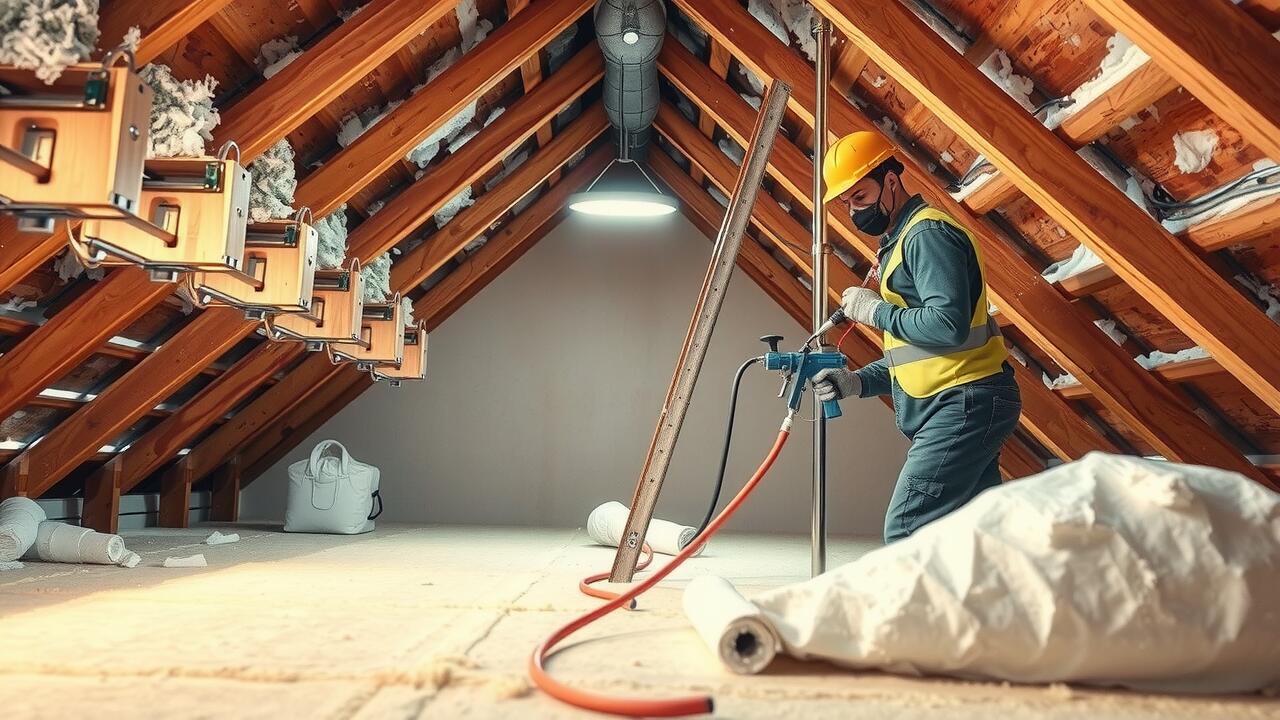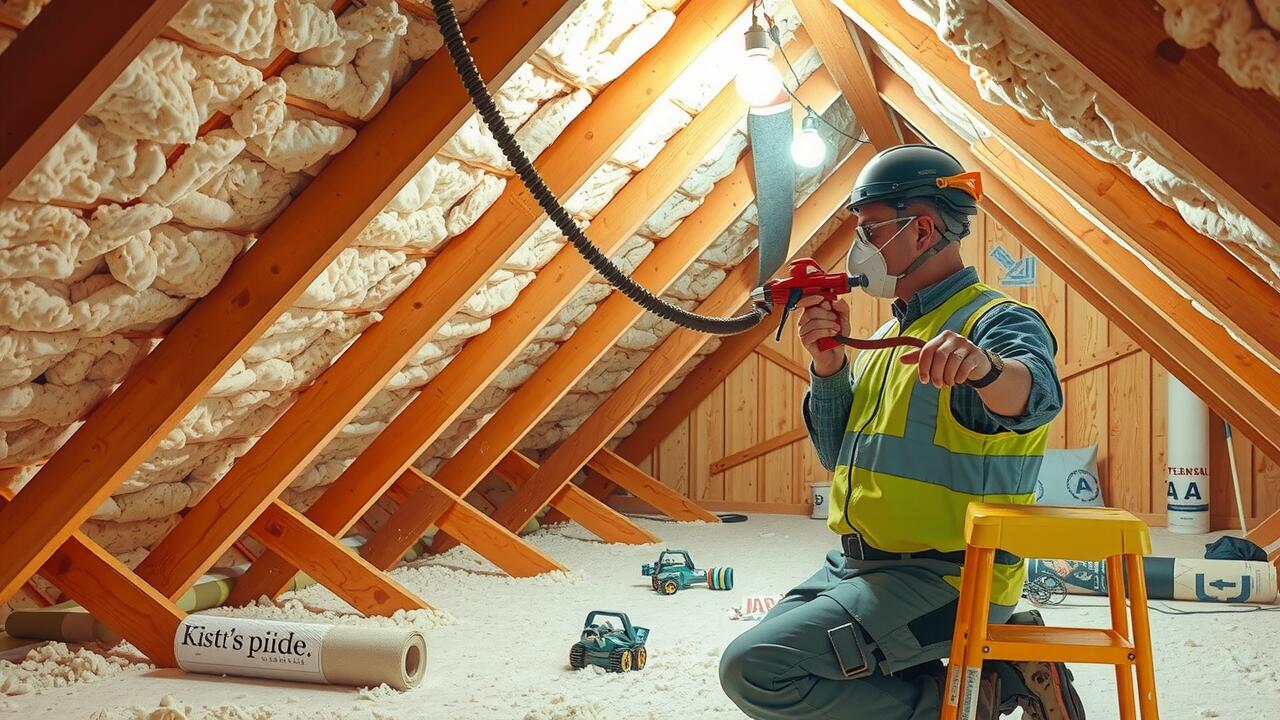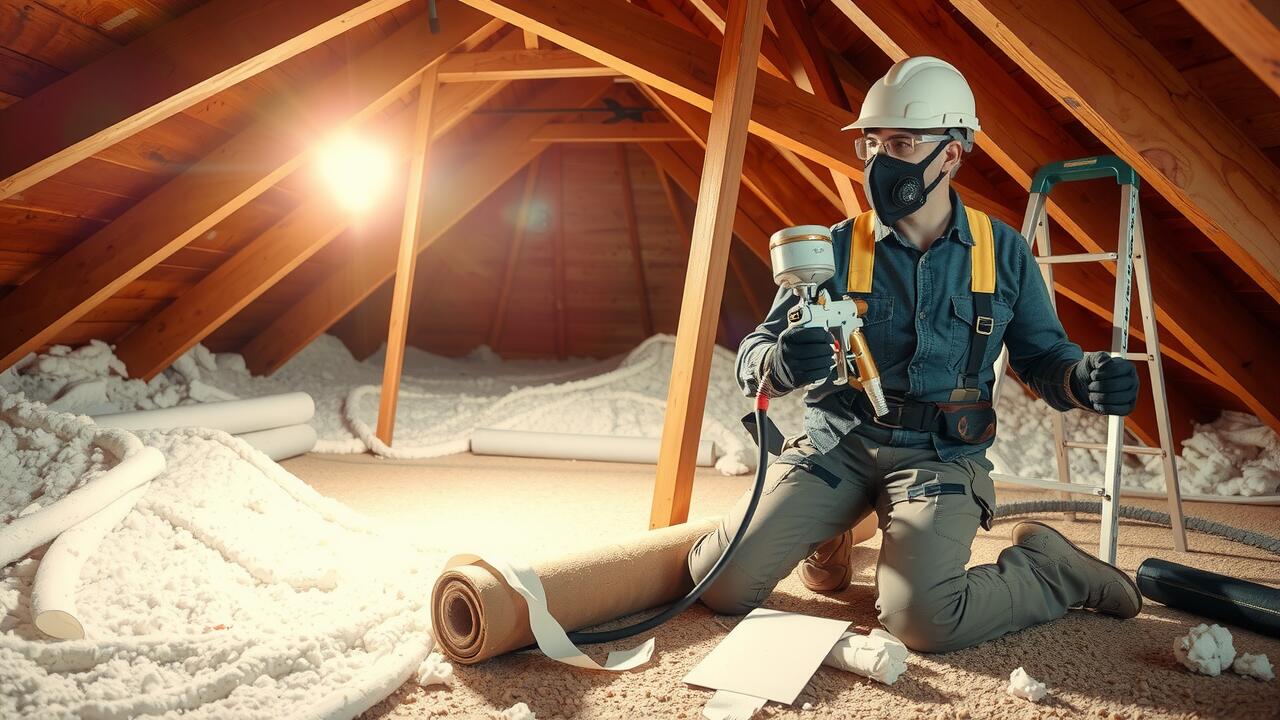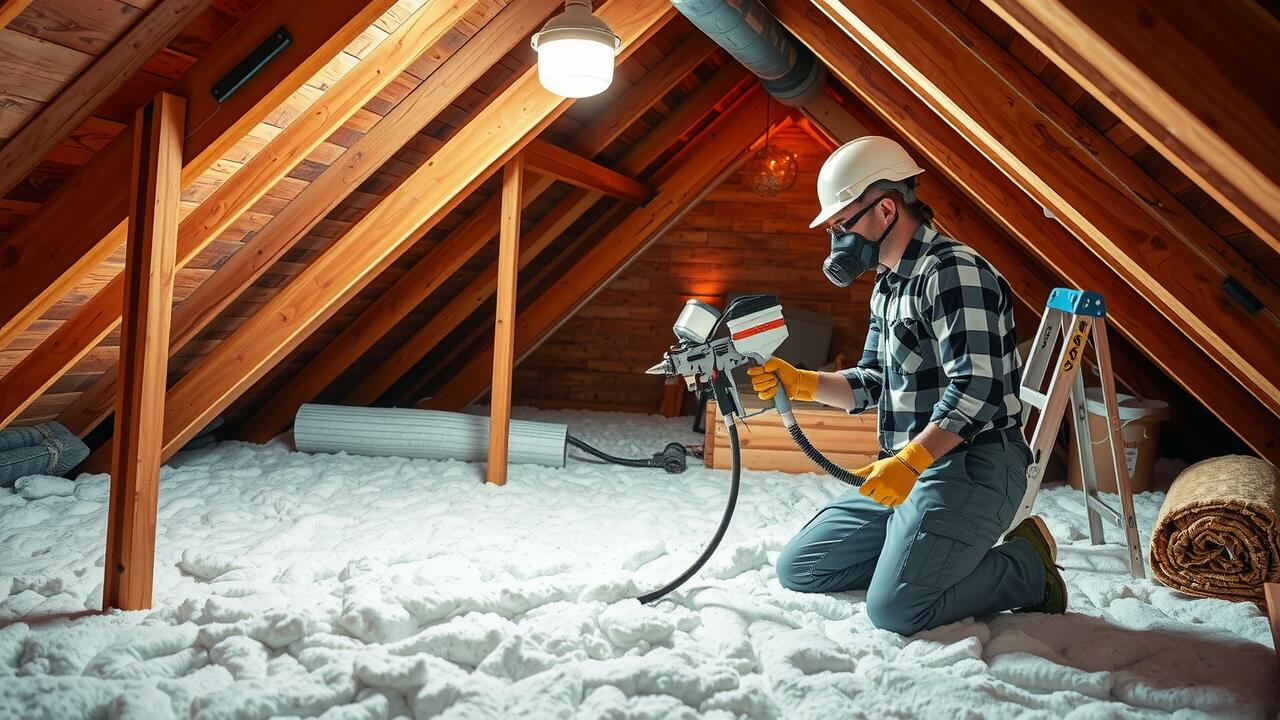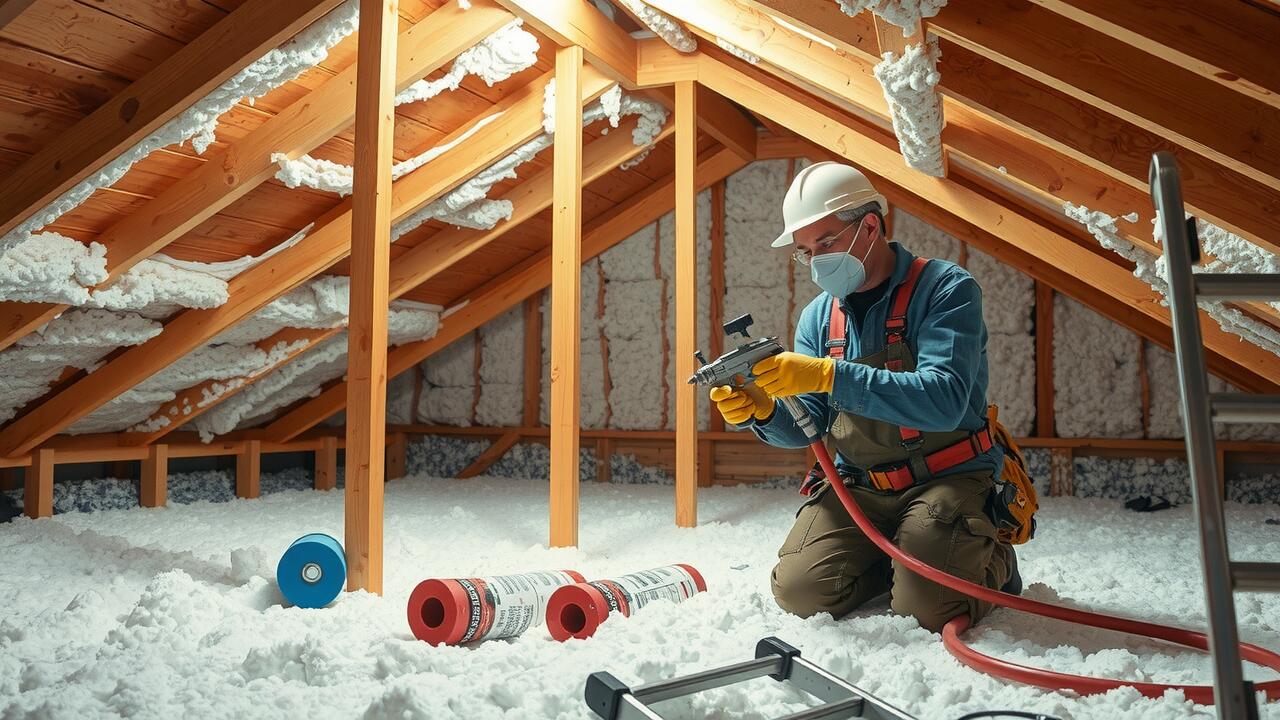
At INSUL8, we specialise in providing top-quality attic insulation services designed to enhance the energy efficiency of your home. Our experienced team utilises the latest materials and techniques to ensure your attic is properly insulated, reducing heat loss in winter and keeping your space cooler in summer. By opting for our attic insulation services, you can significantly lower your energy bills and create a more comfortable living environment. We take pride in delivering tailored solutions that meet the unique needs of each client, ensuring a seamless installation process that maximises your home's potential. Choose INSUL8 for a greener, more energy-efficient home!
Cost Considerations
When assessing the financial implications of attic insulation, various factors come into play that can significantly influence the overall expenses. Budget constraints are often a primary concern for homeowners. Different insulation materials, such as mineral wool, rockwool, or cellulose, come with varying price tags. Materials that offer higher thermal efficiency, like Celotex or rigid foam boards, may entail a greater initial investment but could translate into more considerable long-term savings on heating and cooling costs. It's essential to weigh these factors carefully against your particular needs and long-term plans for the property.
The size and condition of the loft also play a crucial role in determining costs. Insulating a pitched roof can be more demanding than insulating standard joists in an attic space. The presence of damp or structural issues, such as potential asbestos or mould, may further complicate the renovation process, requiring additional attention and resources. Homeowners should also consider the cost of professional installation versus DIY options, which can vary greatly. Ultimately, a detailed evaluation of the space, alongside the chosen materials, will ensure an informed decision that aligns with both immediate budgets and future energy efficiency goals.
Factors Influencing Overall Expenses
The cost of attic insulation can fluctuate significantly based on numerous factors. Firstly, the type of insulation material selected will play a crucial role. Common choices include fibreglass insulation, mineral wool, and spray foam, each with different price points and performance characteristics. Products like polyisocyanurate and polyurethane tend to be on the higher end but offer better thermal efficiency. Additionally, local climate can influence material choices; areas with harsher winters may necessitate thicker layers, affecting overall costs.
Labour expenses can also vary depending on the complexity of the installation. Access to the attic, the condition of existing structures, and the need for vapour barriers or additional features, such as radiant barriers or air duct insulation, contribute to the labour costs. Furthermore, safety equipment may be required to ensure a secure work environment, particularly if using materials such as steel mesh or applying spray foam insulation. Overall, a comprehensive assessment of both materials and labour is essential for accurately estimating insulation expenses.
Insulation Performance Metrics
Thermal efficiency is a crucial consideration when assessing insulation performance. Materials vary significantly in their insulating value, which is measured using the R-value. Higher R-values indicate better insulation capabilities, contributing to reduced energy costs and lower carbon emissions. Many homeowners opt for materials like wood fibre and Kingspan, which not only provide thermal resistance but also align with sustainable building practices. The choice of insulation affects heat retention, ultimately impacting overall comfort within the home.
Several factors influence how well insulation performs in real-world scenarios. Moisture management plays a vital role, as damp environments can lead to diminished effectiveness and structural issues. Products such as kraft paper and reflective insulation help manage condensation and maintain efficiency. Proper installation, adhering to building codes and regulations, ensures that performance standards are met. Utilising high-quality materials and techniques is essential for optimising insulating properties, contributing significantly to energy conservation and maintaining a comfortable living environment.
Measuring Thermal Efficiency
Determining the thermal efficiency of insulation involves understanding its insulating value, commonly measured using R-values. These values indicate the material's resistance to heat flow, with higher R-values reflecting better insulation performance. Various insulation materials, such as foam insulation, fibreglass batt, and rock wool, offer differing R-values based on their structure and density. Effective insulation not only reduces energy consumption but also contributes to climate protection by minimising reliance on heating and cooling systems. Homeowners should consider the specific insulation material appropriate for their local climate to maximise energy efficiency.
When evaluating insulation performance, it is also important to assess additional factors such as air leaks and thermal breaks. Insulation should seamlessly integrate with ductwork and framing to prevent any disruption that could diminish its efficacy. Incorporating technologies like insulated concrete forms or structural insulated panels can enhance overall thermal performance. Home insulations should be tailored to individual needs and local environmental conditions for optimal results in maintaining comfortable indoor temperatures and recognising energy performance certificates. Addressing these elements leads to a better insulating system that not only improves energy savings but also promotes a healthier living environment.
Common Issues and Solutions
Damp and condensation problems are common issues faced in attics, particularly in older homes. Poor ventilation often exacerbates these conditions, leading to mould growth and potential structural damage. Homeowners should consider conducting an energy audit to identify areas where heat is escaping or where moisture may be accumulating. Installing appropriate insulation materials, such as rigid foam boards or fibreglass insulation, can help establish a thermal barrier that reduces heat transfer while improving overall energy efficiency.
Another significant concern is the presence of hazardous materials, such as asbestos fibres, in older insulation systems. If suspected, it is crucial to approach such situations with caution and engage professionals equipped with safety equipment to handle the removal process. For those considering a do-it-yourself approach, knowledge of building regulations is essential to ensure compliance when installing new insulation. Moreover, exploring various insulation options, including closed-cell foam or slag wool, can increase fire resistance and enhance thermal performance while mitigating potential health risks associated with improper handling of outdated materials.
Addressing Damp and Condensation Problems
Damp and condensation issues commonly arise in attics, leading to potential damage and reduced insulation performance. Addressing these problems typically begins with identifying moisture sources. Poor ventilation often exacerbates dampness. Installing a well-designed ventilation system can significantly improve airflow, diminishing humidity levels. This may involve mechanical ventilation or ensuring that existing vents are unobstructed. A vapour barrier also plays a crucial role in preventing moisture from penetrating the insulation.
In addition to improving ventilation, selecting suitable insulation materials is essential for mitigating this issue. Products that resist moisture, such as glass wool or those combined with adhesives designed for waterproofing, can be effective. Furthermore, maintaining an energy-efficient building envelope reduces the likelihood of temperature fluctuations that contribute to condensation. Regular inspections of critical components, like lead flashing and wall cladding, help identify and rectify potential sources of water ingress before serious issues develop.
FAQS
What is the average cost of attic insulation?
The average cost of attic insulation can vary widely, typically ranging from £1,000 to £3,000, depending on factors such as the type of insulation material, the size of the attic, and the complexity of the installation.
What factors can influence the cost of attic insulation installation?
Several factors can influence the overall expenses, including the type of insulation material chosen (e.g., fibreglass, foam, cellulose), the size of the attic space, accessibility, and whether any repairs or additional work is needed before insulation can be installed.
How can I measure the thermal efficiency of my attic insulation?
Thermal efficiency can be measured using R-value, which assesses the insulation's ability to resist heat flow. A higher R-value indicates better thermal performance. Additionally, a professional energy audit can help evaluate the efficiency of your attic insulation.
What common issues can arise with attic insulation?
Common issues include dampness, condensation, and inadequate insulation coverage. These problems can lead to reduced energy efficiency and potential damage to the structure of your home.
How can I address damp and condensation problems in my attic?
To address damp and condensation issues, ensure proper ventilation in your attic space, use vapour barriers to control moisture, and consider upgrading insulation to materials that resist moisture. Consulting a professional can also provide tailored solutions to your specific situation.
